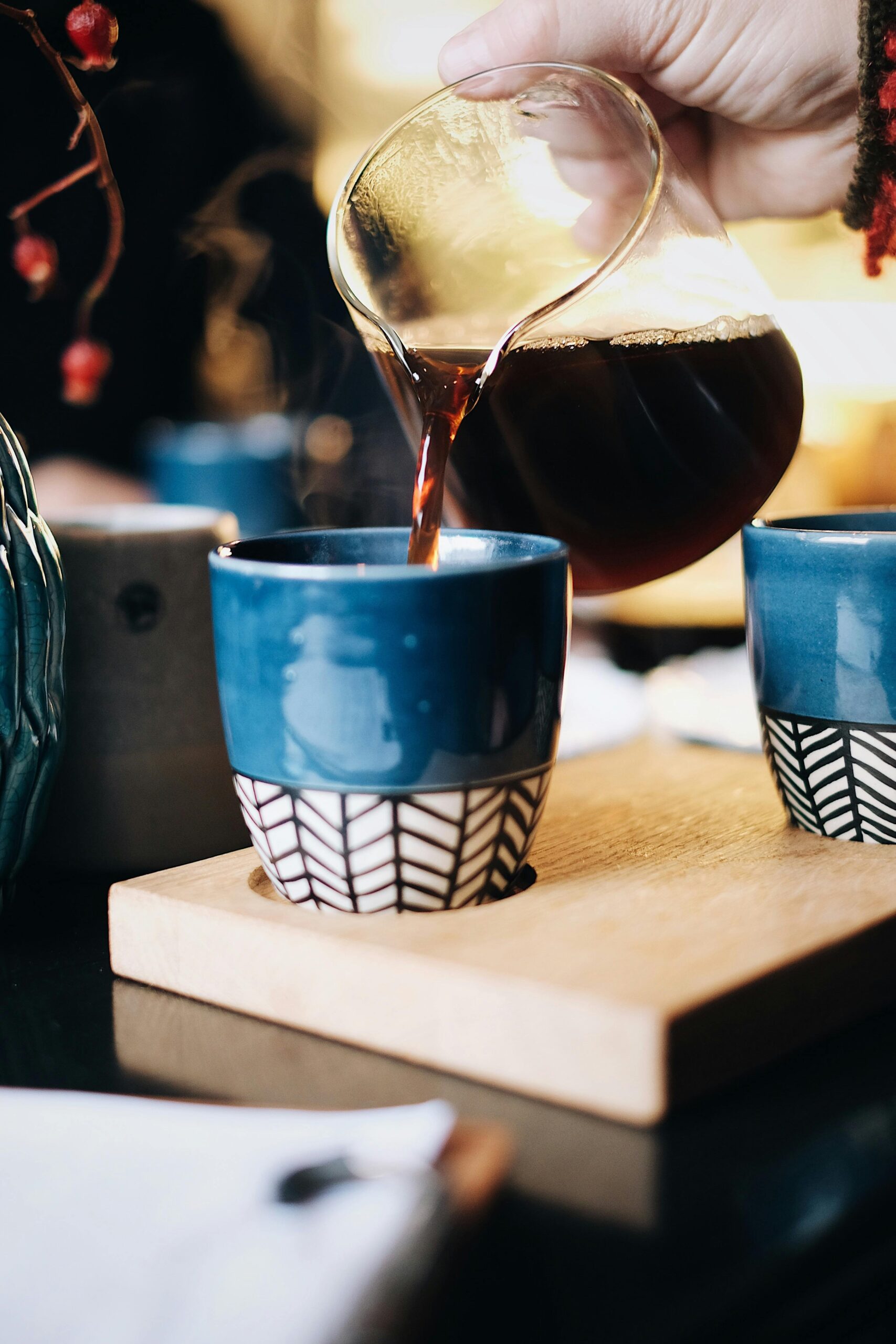Understanding brewing method comparison means recognizing how different techniques highlight distinct aspects of coffee—from clarity and acidity to body and aroma. Each method carries its own rhythm, flavor signature, and sensory presence. Whether you seek ritual, convenience, or precision, finding your preferred brewing style can transform daily coffee into a personalized experience.
This in-depth comparison explores filter, immersion, pressure-based, and cold methods. We’ll focus on taste outcomes, equipment requirements, cleaning, and the kind of experience each method offers. By exploring their differences, you can match a technique to your taste preferences, lifestyle, and desired ritual.
H2: Daily Coffee Routines – Taste vs Convenience
H3: Filter Methods (Pour-over, Auto-drip)
Filter methods deliver clean and transparent cups with clarity in acidity and aromatics. Devices like V60, Chemex, or auto-drip systems highlight brightness and nuanced notes with minimal sediment. They require time and manual control, making brewing feel like a moment of ritual for enthusiasts.
Timed correctly, filter methods offer reliable extraction and reveal origin-specific flavors. While manual filter devices require careful pouring and timing, auto-drip machines offer convenience with consistent heating and flow. These methods are ideal for those who value clarity and control in their morning routine.
H2: Immersion Methods and Full-Bodied Expression
H3: French Press and AeroPress Immersion
Immersion brew techniques like French press or AeroPress (full immersion style) combine coffee and water for a set time before separation. This results in bold cups with fuller body and enhanced sweetness. Oils and fine particles remain, providing richness and depth.
The slower, tactile process invites focus while brewing. French press offers simplicity without filtration, while AeroPress adds flexibility with pressure and steep variations. These methods suit those who prefer textured, immersive cups with a hands-on process.
H2: Pressure-Based Method – Fast, Intense, Focused
H3: Espresso and Moka Pot
Pressure methods deliver concentration and structure in short extraction times. Espresso machines extract rich, dense shots under pressure, offering notes like chocolate, caramel, and crema body. Moka pot offers similar intensity at home using stovetop pressure, producing a compact brew.
These methods are ideal for those who enjoy milk-based drinks or want quick coffee with rich body. Technical precision matters—temperature, tamping, and dose impact flavor significantly. Pressure methods bring café-style experience into daily routines.
H2: Cold and Slow Extraction Options
H3: Cold Brew and Iced Drip
Cold brew and iced drip methods use low-temperature extraction over long periods, producing smooth, mild coffee. The result is low acidity, minimal bitterness, and naturally sweet flavors. Cold brew steeps grounds for 12–24 hours, while iced drip slowly filters water through grounds over hours.
These methods suit coffee drinkers looking for refreshing, mellow cups, especially in warm climates. While preparation time is long, finished concentrate keeps well and brews quickly over ice or diluted. The ritual is slow, but the results are effortless and forgiving.
H2: Comparing Flavor Profiles and Sensory Experience
Each brewing method comparison reveals how flavor elements shift: filter highlights acidity and aroma; immersion enhances sweetness and body; pressure gives intensity and crema; cold brew delivers smooth comfort. Each method shapes extraction dynamics differently, creating unique taste arcs from bloom to finish.
When choosing, consider which elements matter to you: citric brightness, syrupy texture, or concentrated flavor. Think about ritual versus convenience, active pouring grace versus automated ease. Understanding these differences helps align your brewing method with your taste goals and daily flow.
H2: Equipment, Space, and Maintenance Needs
Filter methods require scale, kettle, and paper or reusable filters. Cleanup is moderate but manageable. Immersion needs carafes or devices and careful rinsing. Pressure machines demand more attention: cleaning group heads, portafilters, and descaling. Cold brew requires long-timers and refrigeration space.
Consider your available space and cleaning willingness. A filter setup may fit small kitchens well. French press is minimal but wet cleanup is needed. Espresso machines require investment and routine care. Cold brew takes patience and planning. Align equipment with the experience you’re prepared to maintain.
H2: Compatibility with Lifestyle and Timing
Do you prefer your coffee ready at button press or enjoy brewing as a morning meditation? Filter and pressure methods engage you actively, while auto-drip and cold brew work more passively. Choose based on how you like to integrate coffee into your day—whether as ritual or efficiency.
If you brew multiple cups per household, auto-drip or French press may provide volume and speed. Solo brewers might appreciate AeroPress for quick clarity or espresso for intensity. Cold brew is perfect for prep ahead and iced coffee needs. Match your method to your pace and priorities.
H2: Learning Curve and Skill Development
Pressure methods require the most skill, including dosing and texture control. Immersion techniques like AeroPress invite experimentation with steep time and pressure. Filter methods help refine pouring technique and timing. Cold brew is low-skill but long-wait.
As you explore, expect improvement over time. Filter allows you to train palate and technique. Aeropress invites tweaks in pressure and timing. Espresso trains precision. Cold brew rewards consistency in steep ratio. Let your skill goals guide your method choice.
H2: Final Guidance: Matching Method to Your Taste
If you crave detail, origin clarity and ritual involvement, filter methods may suit you best. For depth, sweetness, and body, immersion methods shine. If you want intense flavor quickly or create milk drinks, pressure brewing is ideal. If you value smooth sweetness, iced convenience, and long-term batch prep, cold brew fits well.
Choosing your ideal method isn’t about ranking techniques—it’s about aligning method to experience, flavor, and routine. Try small experiments with different methods side by side to feel the contrast. Your best brewing method is the one that delivers satisfaction, rhythm, and a coffee experience you look forward to every day.

